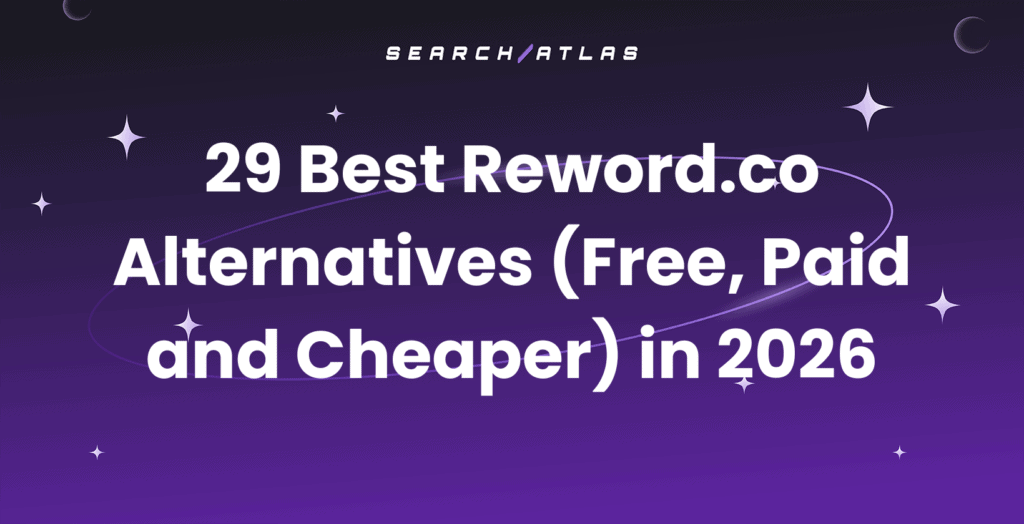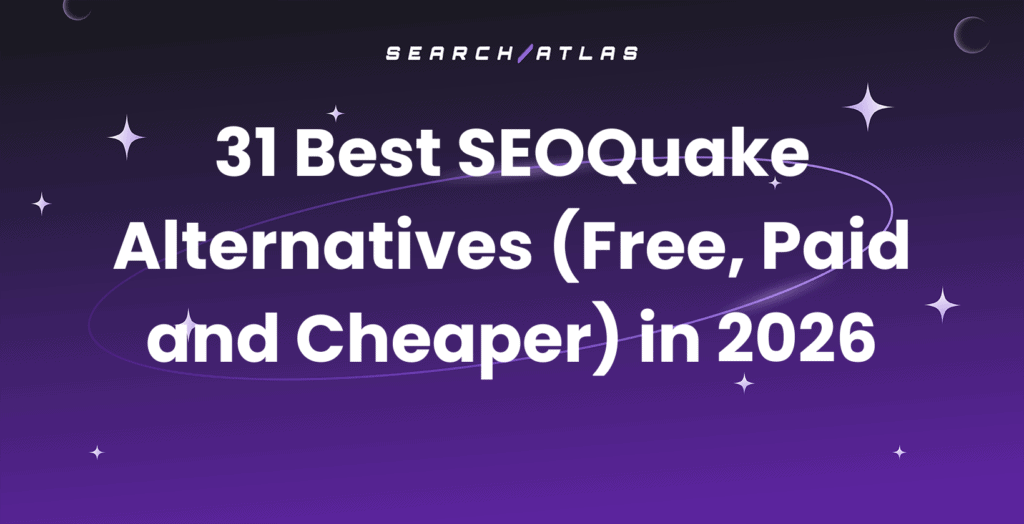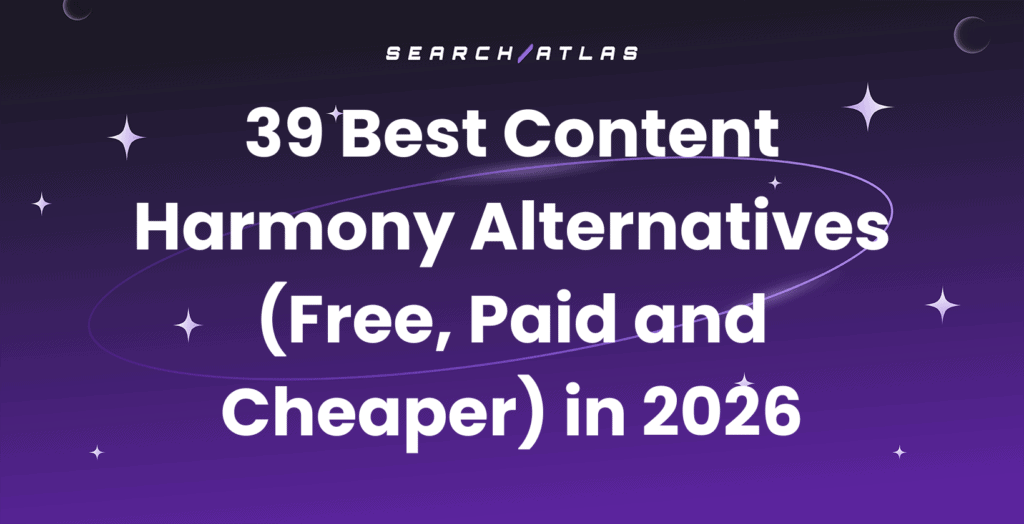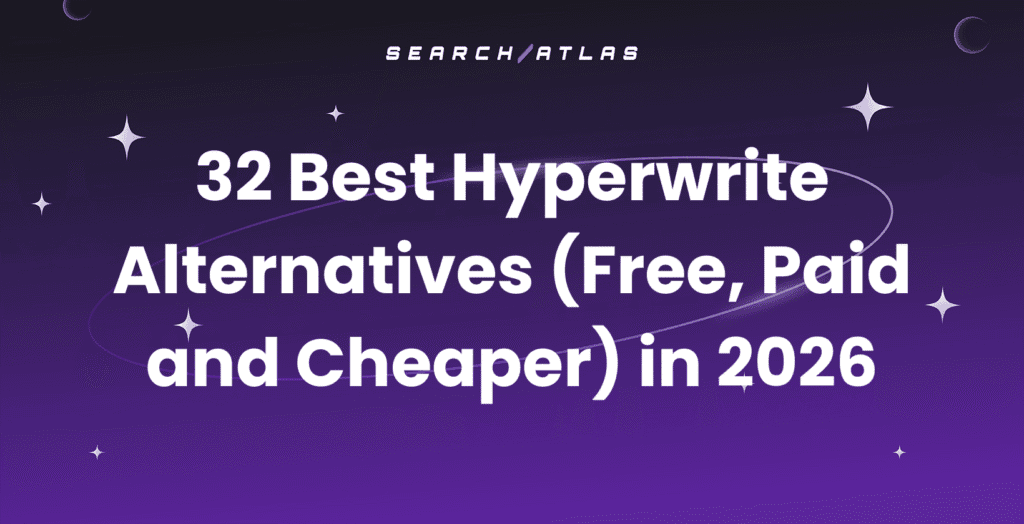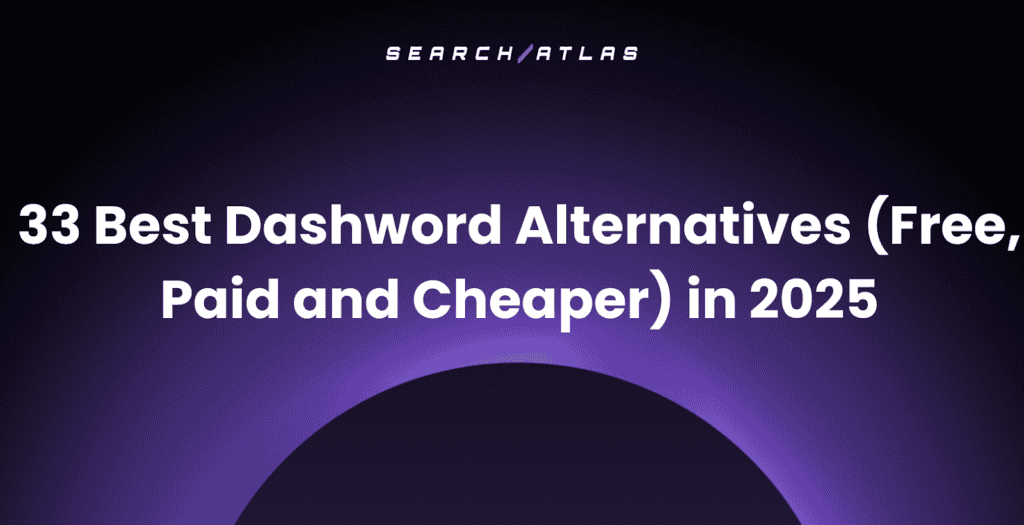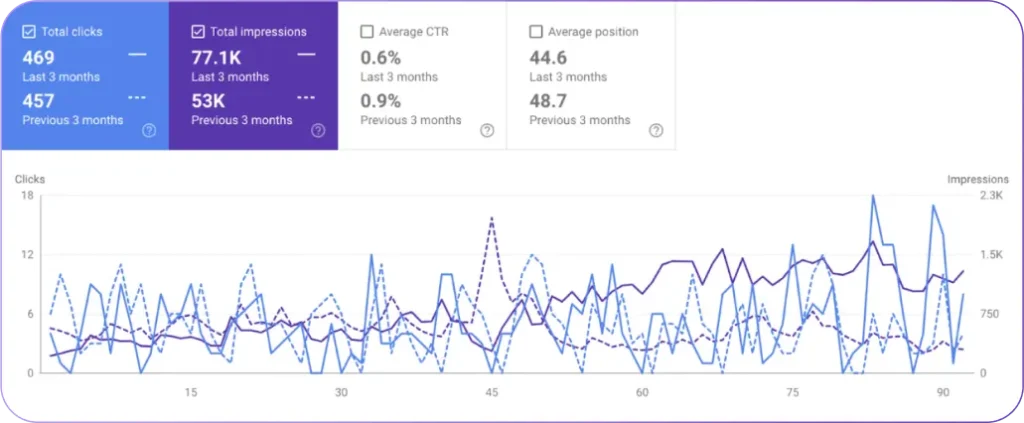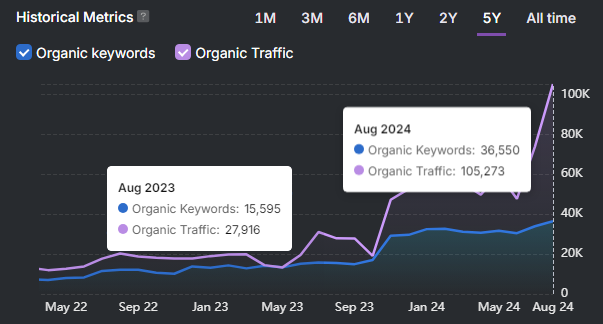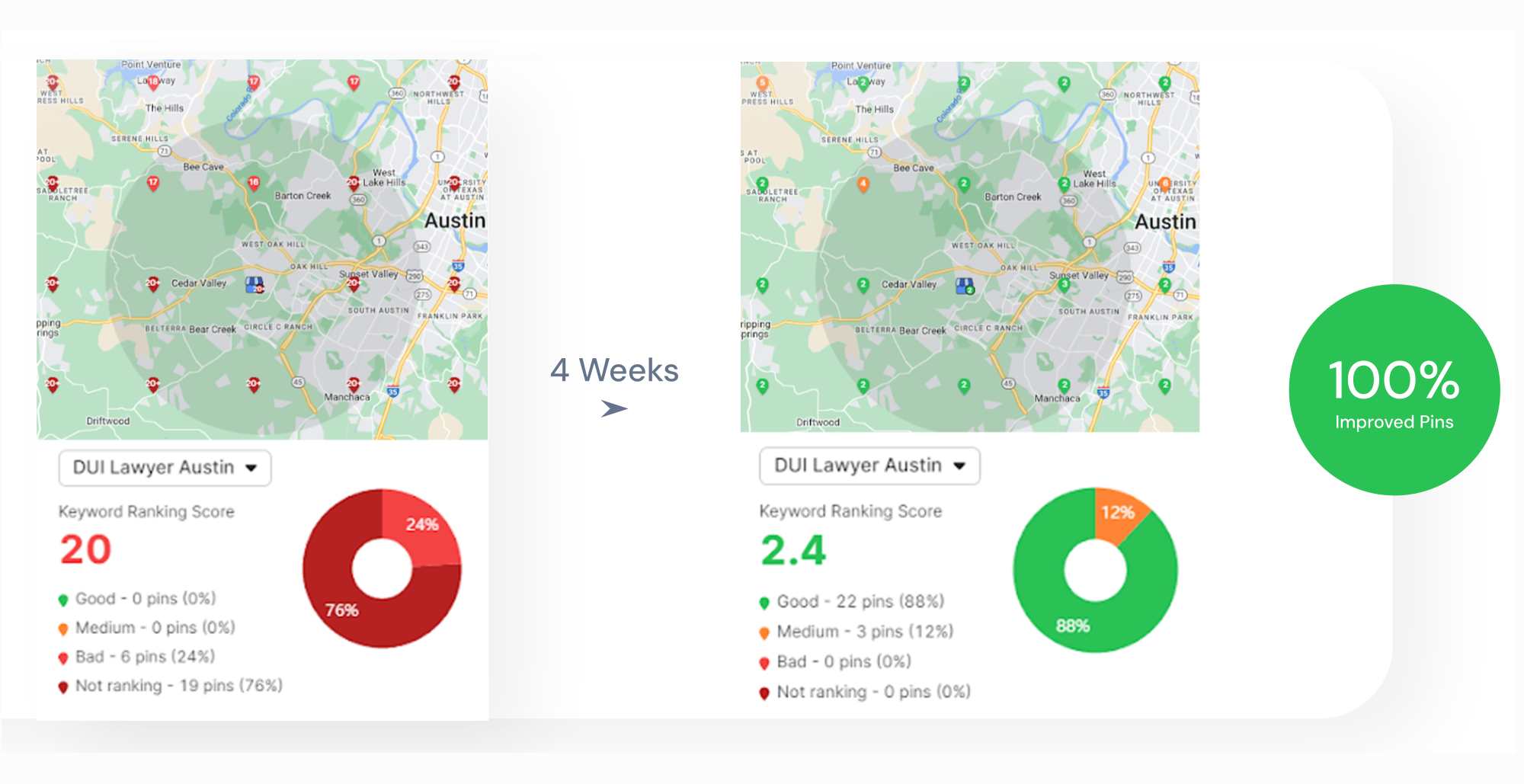Answer Engine Optimization (AEO) is the process of structuring content so that answer engines identify, extract, and display it as a direct response. AEO targets AI systems that return immediate answers instead of ranked lists of links. These AI systems include featured snippets, voice search results, and AI-generated summaries powered by large language models. AEO content prioritizes semantic clarity, structured formatting, and entity-focused definitions.
AEO is important because modern search no longer depends exclusively on blue-link rankings. Users increasingly receive direct answers from retrieval-based and generative models. AEO improves visibility in zero-click environments, conversational interfaces, and AI-powered tools. Effective AEO SEO strategies include formatting content around specific questions, using FAQ and HowTo schema, repeating entities in short triadic structures, and optimizing passage-level clarity. AEO success metrics include featured snippet wins, AI citation frequency, and structured data validation. To optimize for AI visibility, choose tools that evaluate schema usage, detect answer patterns, and test structured outputs.
What is Answer Engine Optimization (AEO)?
Answer Engine Optimization (AEO) is the practice of optimizing digital content to increase its likelihood of being featured as source material in AI-powered answer engines, chatbots, and voice assistants. AEO focuses on creating content that artificial intelligence systems understand, extract, and present as authoritative answers to user queries easily. AEO strategy targets the algorithms that power conversational AI platforms. The AEO strategy ensures content becomes part of the knowledge base these systems reference.
AEO content typically includes clear definitions, consistent terminology, and machine-readable schema that enable systems to extract reliable answers. Pages that perform well for AEO contain headings written as specific questions, short factual blocks, and semantic cues that reflect user intent. Answer Engine Optimization improves the likelihood that a web page becomes the primary source of information across AI interfaces.
How Answer Engine Optimization Works?
Answer Engine Optimization works through three core processes of content structuring, entity targeting, and schema signaling. Content structuring organizes information into scannable sections that answer one intent per block. Entity targeting repeats core terms using formats such as “X is Y that Z,” which mirrors the way AI identifies authoritative answers. Schema signaling uses structured data types like FAQPage and HowTo to mark up the purpose of the content, which improves extractability.
AI has changed the future of search by replacing ranked link lists with synthesized answers. Large language models (LLMs) generate responses using trusted data sources, and retrieval engines select passages that demonstrate high factual density, semantic clarity, and context alignment. Pages optimized for AEO are more likely to appear in featured snippets, voice search results, and generative answer panels.
How Does Answer Engine Optimization differ from Traditional SEO?
Answer Engine Optimization differs from Traditional SEO in its target output, content formatting, and retrieval mechanism. Traditional SEO optimizes web pages to rank in organic search engine results pages (SERPs) using on-page, off-page, and technical signals. Answer Engine Optimization optimizes content for extraction and citation in zero-click results such as featured snippets, AI summaries, and voice answers. AEO content is designed for retrieval and display, not just indexing and ranking.
The process of Answer Engine Optimization focuses on question-driven structuring, entity-level formatting, and schema-based context labeling. Traditional SEO involves keyword targeting, internal linking, meta optimization, and backlink acquisition to improve rankings. AEO formats each content block to answer a single query, uses triadic definitions to improve answer precision, and applies schema types like FAQPage or HowTo to signal extractable content roles.
AEO is not replacing traditional SEO, but expanding the visibility layer of modern search. As AI-driven systems prioritize direct answers, SEO strategies must include both ranking for SERPs and appearing in answer engines. Pages optimized for both traditional SEO and AEO earn traffic through traditional clicks and AI citations.
What is the Importance of Answer Engine Optimization (AEO)?
Answer Engine Optimization is important because it aligns content with how modern users search and how AI systems retrieve answers. Search behavior is shifting toward voice queries, AI chat interfaces, and zero-click results, AEO ensures that content is structured for extraction and immediate display.
AEO supports digital marketing by making brand content discoverable across emerging answer-based platforms. With AI-generated summaries, featured snippets, and voice assistants becoming the first touchpoints in user journeys, brands that adopt AEO are positioned to appear as authoritative sources. The benefits of AEO include increased brand exposure, higher answer-share in SERPs, and improved user trust through repeated citations. In the context of AEO digital marketing, this means reaching audiences faster, shaping first impressions, and optimizing for visibility beyond traditional rankings.
What are the Best Answer Engine Optimization Strategies?
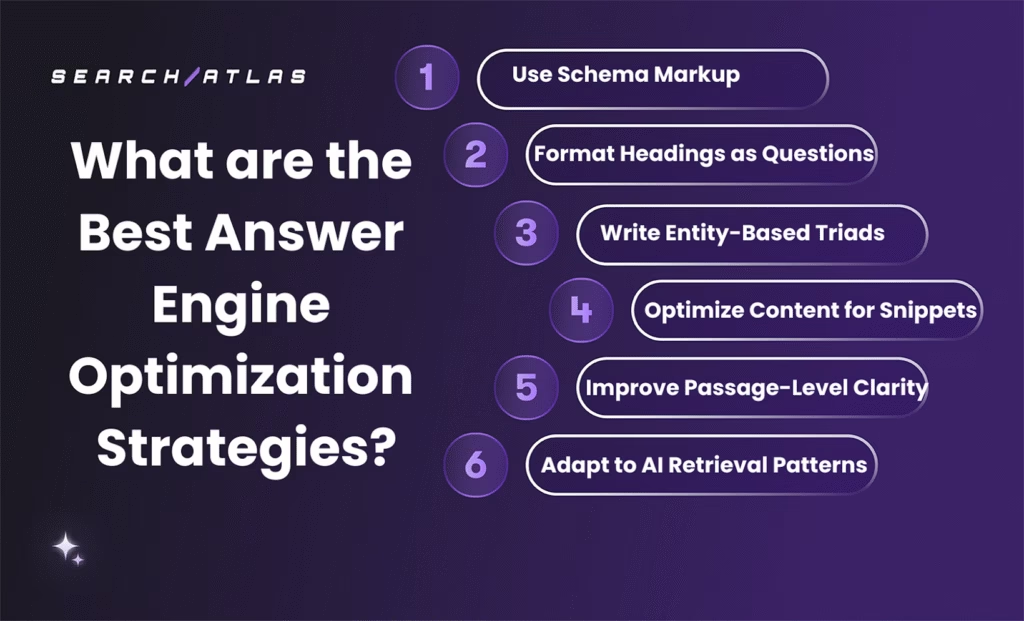
The best Answer Engine Optimization strategies are the structured methods that make content extractable, credible, and eligible for AI-powered answers. Effective AEO implementation focuses on schema markup, passage clarity, and entity-based formatting so answer engines can recognize and display reliable information.
The 6 top AEO strategies are listed below.
1. Use Schema Markup to Signal Content Purpose
Schema markup is structured data code that helps answer engines interpret the role of each content block. Using schema increases eligibility for featured snippets, FAQ results, and voice search responses. Schema markup benefits AEO by making content machine-readable and clearly tied to user questions.
For example, a recipe page with Recipe schema is more likely to appear in AI-generated cooking instructions than an unmarked page.
To implement schema markup, follow the tips below.
- Add FAQPage schema for question-and-answer sections.
- Use the HowTo schema for step-by-step processes.
- Validate your schema with the Rich Results Test to confirm eligibility.
To implement schema markup, use the Search Atlas Schema Markup Generator. The Search Atlas Schema Markup Generator creates JSON-LD code for multiple schema types, including FAQPage, HowTo, LocalBusiness, and Article. It simplifies schema creation by allowing users to enter questions and answers into an interface and then automatically generating the correct code.
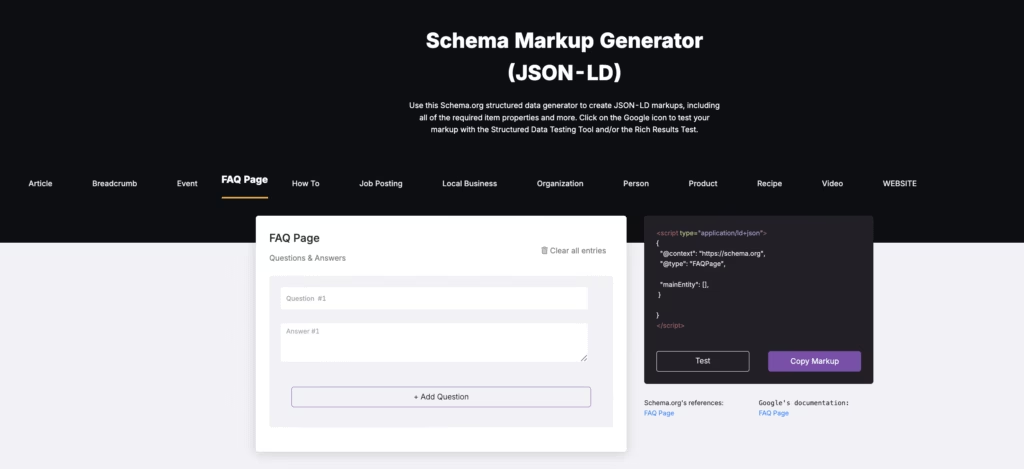
2. Format Headings as User Questions
Question-based headings are titles written in the form of queries that match real search intent. This strategy benefits AEO by aligning with how answer engines parse prompts and retrieve structured responses. Pages with question-based headings are more likely to earn featured snippets and AI-driven answer placements.
To create question-based headings, use Search Atlas Content Genius v3. Content Genius automatically suggests headings based on real search queries and reformats content into question-answer structures. This ensures each passage answers a distinct query, increasing passage-level clarity and AEO eligibility.
The steps to optimize headings as user questions with Search Atlas Content Genius are below.
- Enter your target keyword into Content Genius to generate a content outline.
- Review the AI-suggested H2 and H3 headings, which are pulled from real user questions and SERP data.
- Select headings framed as complete questions, such as “What is AEO in SEO?” or “How does schema improve answer visibility?”
- Write or refine 40- to 60-word answers beneath each heading, ensuring the entity appears in the first sentence.
3. Write Entity-Based Triads for Key Concepts
Entity-based triads present information in three related elements: definition, attribute, and importance. Triad structure benefits AEO by delivering factual density and semantic clarity.
The tips to create triads are below.
- Start each answer with “[Entity] is [definition].”
- Add “[Entity] includes [attribute].”
- Finish with “[Entity] matters because [importance].”
An example would be “Hreflang tags are HTML attributes. Hreflang tags define language and region targeting. Hreflang tags matter because they prevent duplicate content issues.”
The Search Atlas Content Genius tool automatically creates entity-based triads, ensuring your content is fully optimized for AEO.
4. Optimize Content for Featured Snippets
Featured snippets are short answer boxes displayed at the top of search results. Optimizing for featured snippets benefits AEO by increasing zero-click visibility and AI citation potential.
The best practices to optimize content for featured snippets are below.
- Provide concise answers of 40 to 60 words under question-based headings.
- Use lists and tables where relevant.
- Place the most factual sentence first for snippet extraction.
For example, a table comparing “SEO vs AEO” increases the chance of being selected for snippet display.
5. Improve Passage-Level Clarity
Passage-level clarity means structuring each content block to answer one question in a short, scannable format. Improving passage-level clarity benefits AEO because answer engines extract answers at the passage level, not from the entire page. Clear passages increase the likelihood of citation in featured snippets, voice results, and LLM-generated responses.
To optimize passage-level clarity, keep paragraphs 2 to 5 lines, answer one question per passage, avoid vague phrases, and keep entities explicit.
Content Genius scores each passage for semantic density, readability, and entity clarity. It provides real-time recommendations to rewrite content into extractable segments that align with AEO best practices.
The steps to enhance passage clarity with Search Atlas Content Genius are below.
- Input your topic or keyword into Content Genius to generate content sections.
- Review the passage-level scoring for each block, which evaluates clarity, structure, and semantic coverage.
- Rewrite content using the AI-assisted edits, keeping each passage 2 to 5 lines long.
- Ensure each passage starts with a direct answer and includes entity-based triads for maximum extractability.
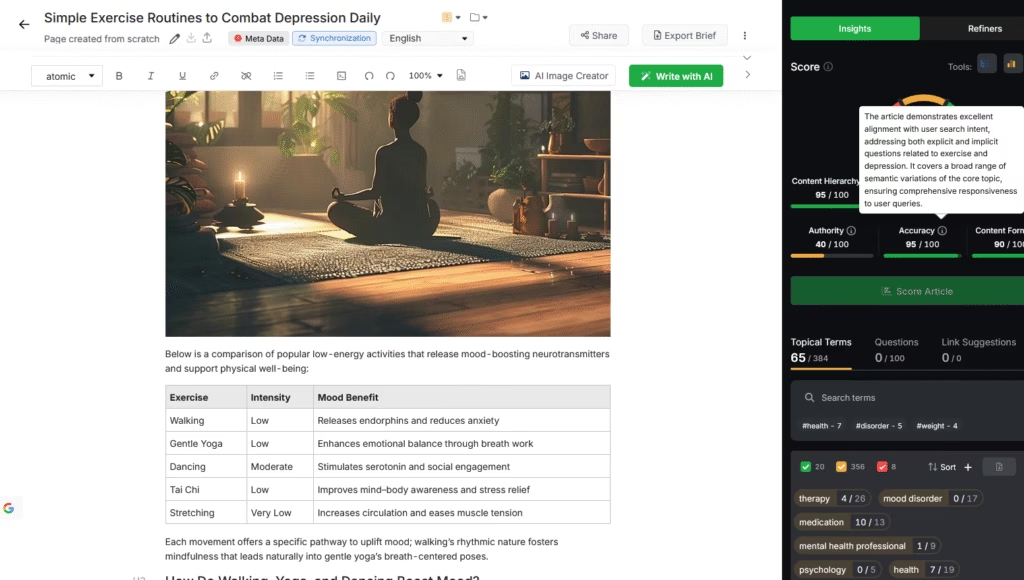
6. Monitor and Adapt to AI Retrieval Patterns
AI retrieval patterns describe how language models select and cite documents. Tracking these patterns benefits AEO by showing which content sources answer that engines trust.
The tips to monitor AI retrieval patterns are below.
- Use AEO visibility tools like the Search Atlas QUEST to see if your content appears in LLM answers.
- Identify the source documents driving AI outputs.
- Update or contribute to those documents to increase inclusion.
The Search Atlas QUEST LLM Visibility tool enables AEO implementation by providing real-time visibility into large language model outputs. Quest interrogates models like ChatGPT, Claude, and Bing to discover the source documents behind their answers. It then supplies workflows for outreach to authors and publishers, allowing SEO teams to increase brand presence in trusted sources.
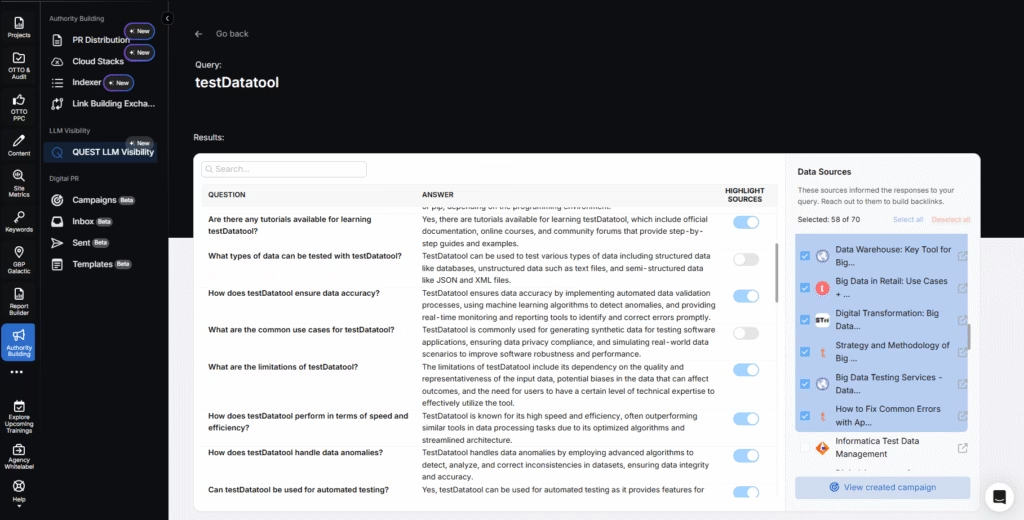
How long does Answer Engine Optimization take?
Answer Engine Optimization takes 30 to 90 days to show measurable results in AI-powered search interfaces. AEO time frame accounts for indexing delays, schema recognition, and retrieval model updates used by answer engines. Pages must first be crawled, then parsed, and finally understood before they become eligible for inclusion in featured snippets or LLM-generated answers.
The AEO timeline depends on 3 variables that include crawl frequency, structured data validation, and content clarity. Pages on actively updated domains with clean technical SEO can be reindexed in under 7 days. Structured data recognition tools like Rich Results Test typically detect schema updates within 24 to 72 hours. However, answer engine inclusion occurs only after passage-level scoring aligns with entity confidence, which is updated every 2 to 4 weeks, depending on the system.
Expect citation in featured snippets or AI summaries within 4 to 12 weeks after full AEO implementation. Use schema testing tools, AI citation monitors, and search engine visibility trackers to verify progress.
Is Answer Engine Optimization worth it?
Yes, Answer Engine Optimization is worth it for brands that want visibility in AI-generated answers, featured snippets, and voice search results. AEO increases the likelihood that content will be cited or displayed in zero-click formats, which now dominate the top of many search interfaces. Optimizing for AEO enables content to reach users even when no traditional organic link is clicked.
AEO is especially valuable in search environments powered by large language models and conversational agents. Brands that invest in AEO gain a competitive advantage in answer-first ecosystems that influence user trust, brand exposure, and long-term visibility.
How to Measure the Success of Answer Engine Optimization?
Measure the success of Answer Engine Optimization by tracking answer visibility, structured data validation, and retrieval-based citation. AEO does not rely on click-through rates or keyword rankings alone. Instead, success is defined by how often content appears in featured snippets, voice responses, and AI-generated summaries across search engines and language models.
The most effective AEO success metrics include featured snippet inclusion, schema detection, and AI citation frequency. Featured snippet wins can be tracked using rank monitoring tools that flag paragraph, list, and table snippets. Schema validation tools like Rich Results Test confirm whether content qualifies for answer-focused display formats. AI citation tracking tools and LLM observability platforms help identify whether your content is referenced or synthesized in zero-click results.
Track AEO performance by combining structured data coverage, passage-level formatting audits, and answer result monitoring. Effective solutions highlight entity clarity, FAQ markup status, and real-time answer engine retrieval. Content that scores well on these metrics is more likely to be selected by AI-driven systems.
What’s the Leading AI Tool for Answer Engine Optimization (AEO)?
The leading AI tool for Answer Engine Optimization (AEO) is Search Atlas Content Genius v3, combined with the Search Atlas QUEST Tool. Content Genius v3 generates schema markup, rewrites content for semantic clarity, and optimizes passages for featured snippet eligibility. Search Atlas QUEST is a tool that provides actionable insights for answer engine optimization by tracking brand visibility in large language models (LLMs), identifying the source documents those models rely on, and providing workflows to influence them.
Content Genius v3 is a top answer engine optimization software that focuses on structuring content for AEO success. The Search Atlas Content Genius tool formats headings as questions, applies FAQ and HowTo schema, and rewrites content blocks using entity-based triads, making them easier for answer engines to extract. The most popular answer engine optimization tool ensures that web pages qualify for featured snippets, voice answers, and schema-rich results.
Quest extends AEO into the realm of Large Language Model Optimization (LLMO). It measures whether content is included in AI-generated responses, uncovers the documents driving those responses, and supports outreach to authors and publishers to improve inclusion. Together, these tools ensure visibility both in traditional answer boxes and in generative AI outputs.
What are the Biggest AEO Challenges?
The biggest challenges of Answer Engine Optimization are content extraction issues, evolving AI algorithms, and measurement limitations. AEO requires strict structuring and clear entity formatting, but answer engines rely on constantly changing AI models and retrieval logic, which can make optimization unpredictable.
The 5 biggest AEO challenges are listed below.
- Content Structuring. Pages need precise, question-based sections, short definitions, and schema markup for AI to extract reliable answers.
- Algorithm Changes. Answer engines frequently adjust ranking and retrieval rules, which affects the consistency of AI-generated responses.
- Measurement Gaps. Tracking AEO success is difficult because traditional SEO metrics like keyword rankings and CTR do not apply directly to answer engines.
- Competition for Snippets. High-authority sites and government sources dominate featured answers, which makes it harder for new pages to gain visibility.
- Entity Misinterpretation. AI models can misinterpret content if entities or definitions are unclear, leading to inaccurate or missed citations.
What does the Future of AEO look like?
The future of Answer Engine Optimization centers on AI-native search interfaces, multimodal responses, and real-time answer generation. Large language models and retrieval-augmented generation (RAG) systems will continue to shift search behavior away from link-based browsing toward direct, contextual responses across chat interfaces, voice assistants, and AI summaries.
Answer engines will prioritize sources that deliver passage-level clarity, schema-backed structure, and high entity confidence. As these models evolve, AEO will require even more precision in how content is defined, supported, and semantically links key terms. Structured content that aligns with context-driven queries will be favored across dynamic results and personalized outputs.
Future AEO strategies will need to account for model transparency, citation traceability, and passage trustworthiness. Tools that track AI mentions, validate schema implementation, and test passage readability will become essential for maintaining visibility in generative ecosystems. As traditional ranking signals lose weight in zero-click interfaces, AEO will become central to long-term content discoverability and brand presence.
What to know about AEO besides AI SEO?
Answer Engine Optimization (AEO) and AI SEO address different stages of visibility in AI-powered search, but both contribute to performance in machine-driven discovery. AEO focuses on making content extractable and retrievable by answer engines, while AI SEO focuses on using artificial intelligence to generate, optimize, or audit content for ranking performance. AEO targets how content is used by AI. AI SEO focuses on how content is produced using AI.
AEO optimizes content for retrieval, structure, and semantic clarity. AI SEO uses machine learning tools to generate content, identify opportunities, and automate SEO tasks. AEO outcomes include featured snippets, voice answers, and AI citations. AI SEO outputs include keyword clustering, content outlines, and NLP-driven writing assistance.
Pairing AEO with AI SEO supports both production efficiency and answer visibility. AI SEO speeds up content creation and optimization. AEO ensures that content is formatted and structured for use in zero-click responses. High-performing AI content still requires AEO structure (triadic definitions, schema markup, and question-based formatting) to rank in answer engines.
What’s the difference between AEO and LLMO (Large Language Model Optimization)?
Answer Engine Optimization (AEO) refers to the process of formatting and structuring content so that retrieval-based systems can extract it as a direct answer. AEO targets answer engines that select pre-existing content for display in featured snippets, voice results, and zero-click panels. The goal of AEO is to improve content extractability, passage relevance, and structured response eligibility.
Large Language Model Optimization (LLMO) refers to the process of optimizing content so that large language models understand, cite, and synthesize it accurately in generative responses. LLMO targets systems like ChatGPT, Gemini, and Claude, which generate answers based on patterns in training data, real-time retrieval, or hybrid architectures. The goal of LLMO is to increase the likelihood that AI models pull factual elements from optimized sources during answer generation.
The difference between AEO and LLMO lies in the engine type and content handling logic. AEO relies on structured retrieval. Models extract specific blocks of content using schema, headings, and entity structure. LLMO adapts to generative behavior. Models rewrite or synthesize answers using probability-based predictions, retrieval signals, and citation logic.
For example, a page with a clearly defined FAQ block may win a featured snippet through AEO. A research-backed blog with clean headings and entity clusters may be cited in an LLM-generated response with the help of LLM optimization.
What’s the difference between AEO and GEO (Generative Engine Optimization)?
Answer Engine Optimization (AEO) optimizes existing content for direct extraction by retrieval-based answer engines. AEO improves passage formatting, schema coverage, and question alignment to win visibility in systems that display snippets or answers directly from the web.
Generative Engine Optimization (GEO) refers to the process of influencing how generative engines interpret, rephrase, and present content in AI-generated outputs. GEO involves optimizing semantic clusters, embedding context, and managing prompt-response behavior to increase brand accuracy and inclusion in AI summaries.
AEO depends on how well a page is structured for extraction. GEO depends on how well a topic is represented within generative language models. AEO focuses on markup, definition patterns, and scannable answers. GEO focuses on embedding presence, prompt relevance, and natural language adaptation within the model’s outputs.
For example, AEO increases the chance of being quoted in a featured snippet. GEO increases the chance of being summarized in an AI paragraph without a direct citation.




